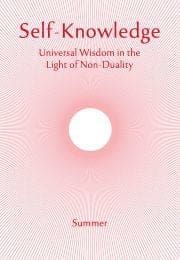So how are things?
Throughout our life we are in contact with things, living or inanimate, many of which have qualities that help us to survive, and contribute to our pleasure and comfort. There are also things revealed by science which are too minute to be seen by the naked eye and do not have a form in the everyday sense. Yet these sub-atomic phenomena also possess qualities, such as electrical charge, mass and motion, and we can only discuss and manipulate them in terms of such qualities.
What is a thing? In the plainest sense found in dictionaries, it is ‘an entity of any kind’. More precisely, a thing is anything which is or may be an object of perception, knowledge or thought. So to be a thing you have to have qualities (at least one), because this is the only way you can become an object known to the mind or the senses. We may add that for purposes of communication and organisation, an entity needs to have a name.
Things are combinations of qualities. One may identify several such qualities in, say, a banana: yellow, curved, possessing an easily peelable skin, sweet, pulpy, spreadable, not to mention qualities to do with its cultivation and nutritional content.
What about people? Since the qualities of the human body and mind are capable of becoming objects of perception, knowledge or thought, in this sense, people and their characteristics are also ‘things’. But the key question as regards humankind and all entities, is: Are entities or things any more than collections of qualities? If this were so, our experience would be limited to the material plane , or that of transitory mental events, with no hint of a deeper reality or a path to liberation.
The non-dual teaching relieves us of this possibility. The illumined sages, who probed experience to its utmost depths, realised that, pervading all experience, yet too subtle to be grasped by mind, senses or speech, is a single ‘non-dual’ reality. Though transcending name and form, it is denoted by the name Brahman, suggesting inexpressible subtlety and greatness, while its ‘formless form’ could be signified by terms such as ‘All’.
The classical non-dual text, Drg-Drshya-Viveka, has a verse which ‘unpacks’ the nature of things as discussed so far, and sheds further light on the meaning of Brahman.
Every entity has five characteristics: existence, cognisability, attractiveness, form and name. Of these, the first three belong to Brahman, and the next two to the world. [Verse 20]
Here Brahman, as the unchanging, underlying Reality, is denoted by the three words ‘sat’ (pure being or is-ness), chit (pure consciousness or perfect knowledge) and ananda (bliss or the total freedom from suffering). Thus everything that we experience has a nature that is transient, based on the qualities found in its name and form; it also has a ‘Brahman’ nature, which renders it at one with the inner being of the universe.
The verse from Drg-Drshya-Viveka does not actually use the term sat-chit-ananda. Instead, it refers to the Brahman-nature by the words asti (It is), bhati (It shines) and priyam (It is dear). But the correspondence of these expressions with sat-chit-ananda is clear.
It is true that we recognise in ourselves existence and consciousness, but these fundamental principles seem to be mixed up with and limited by our finite personality. Our unenlightened human experience gives no clue that the ‘I am’ in me is one with the principle of Existence which pervades the universe as Brahman. In other words, our grasp of what is meant by Existence and Consciousness is confused and conditioned by the mental activity that usually fills our mind. But once the mental activity is consciously curtailed, it is as if an inner clearing is brought about, and the free, pure and limitless nature of being-consciousness is accepted as a real possibility, leading to a deeper self-understanding and ultimately to the certainty that our true nature transcends the boundaries of names, forms and qualities.
Again, we may ask whether it is not merely fanciful to suggest that bliss is also a valid pointer to our essential nature? As with the enquiry into being and consciousness, our appreciation of the boundless nature of bliss will grow as we turn to meditation on texts that affirm the freedom and universality of the true Self, and which enable us to loosen our obsession with names and forms. The directive is to seek Reality, not in the qualities that are known to the mind and senses—not in name and form, but in the subtle essence, the inward—the principle of existence-consciousness and bliss.
To uncover the truth of our ultimate identity, we need a peaceful mind, able to detach itself from the tendency to prefer or reject qualities. It is then that our Self is increasingly realised to be innermost, free from all qualities, one-without-a-second, because one can only know of a second entity through its particular qualities, and qualities are here left behind. It is when we can embrace all experience as essentially our own, that the bliss, which is also pure consciousness and being, is realised as self-evident.


